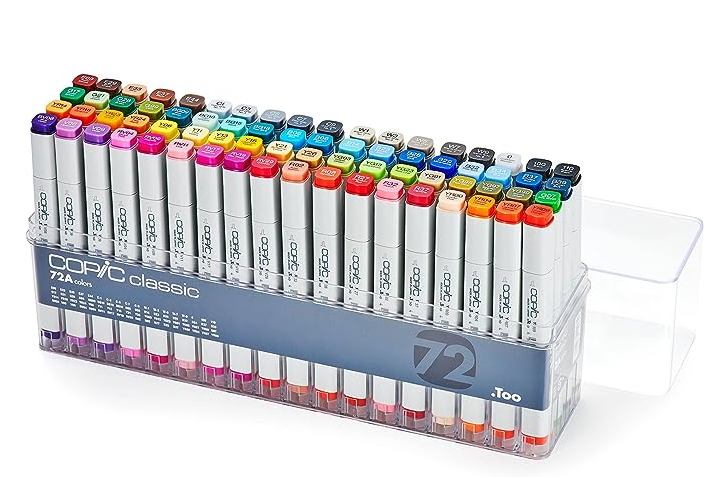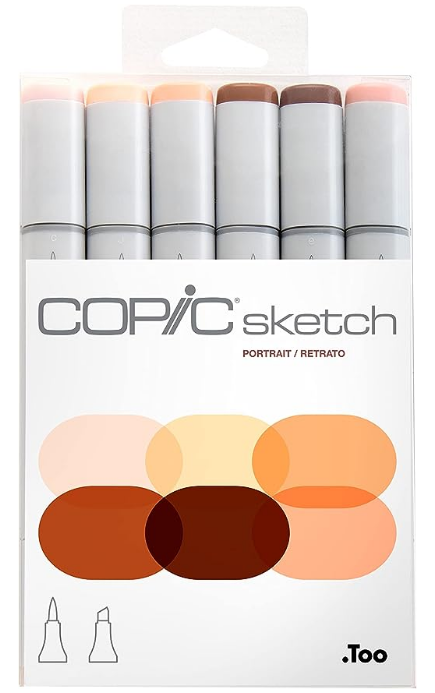The internet-famous Copic markers are loved by so many artists that I have personally seen them everywhere. Fashion designers, character designers, traditional artists, journaling accounts—literally everyone online seems to have had a set of Copic markers, so you’re probably thinking, Are Copic markers worth the hype? In this article, I will help you decide if copic markers are worth it or not.
What’s so special about Copic markers?
Let me give you a little background information about Copic markers. Copic is a Japanese brand that became wildly famous for the alcohol markers it makes. On its website, Copic mentions the following: “It offers the widest color spectrum on the market, consisting of an astonishing 358 colors. All Copic markers are refillable, and nibs can be replaced, making them an environmentally friendly tool. By implementing strict quality control processes, color consistency can be guaranteed from batch to batch.“
So people are buying Copic markers because of the wide range of colors they are offering, because of the environmentally friendly aspect, and because of their buildability. But, is that all?
Are Copic Markers worth the hype?
From my own experience, I have never used a set of alcohol markers as smooth and as buildable as Copic markers. They are genuinely so easy to work with, feel very high quality, don’t dry up easily over time, and layer so perfectly. I used this set of Copic markers for portrait painting for a while before I transitioned to portrait oil painting, and it was such a joyful and therapeutic process that I loved.
I have also seen artists from different disciplines use Copic markers in their artwork, and what can I say? It’s even more therapeutic to watch other people use them and create different works of art with them. However, let’s go through some of the pros and cons of Copic markers, so you can judge for yourself.
Pros and cons of Copic markers
Pros of Copic Markers
The selection of sets and colors is very impressive
Copic markers have great individual sets, such as the aforementioned portrait set, a primary colors set, a pale pastel set, earthy tones, etc.
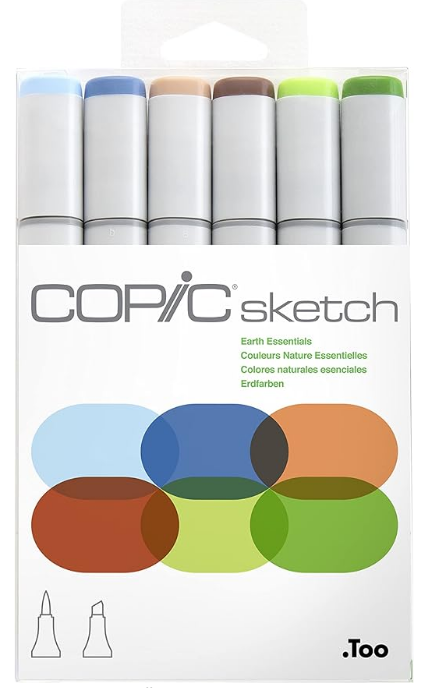
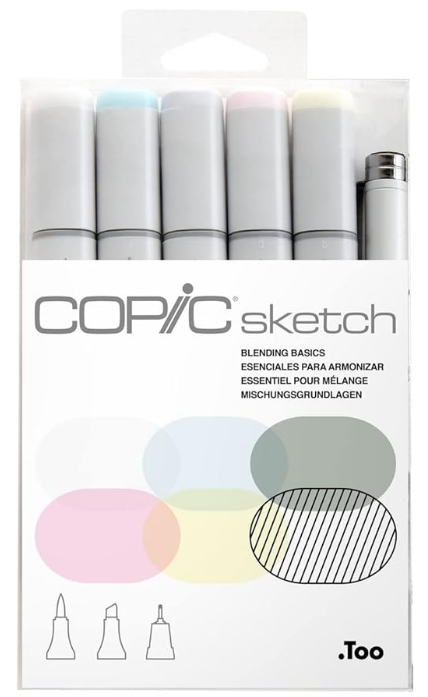
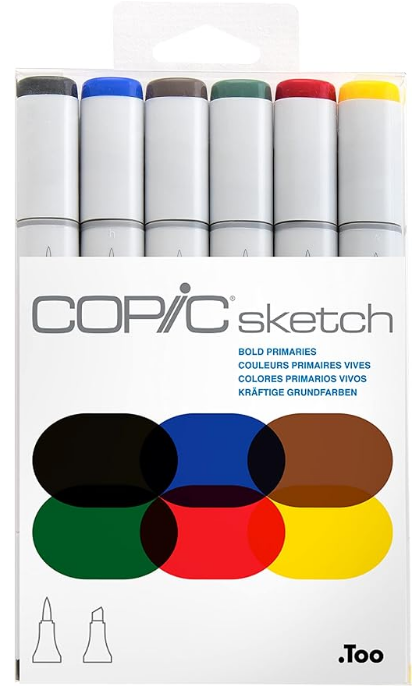
The different types of copic marker heads and brushes
Copic markers come in four types of heads:
- Copic Ciao markers
- Copic Sketch markers
- Copic Wide markers
- Copic Classic markers
These different heads offer great control, depending on the artist’s needs and their art style, which is another pro of comic markers.

Copic has a whole color system that helps you stay consistent with your palette
I have previously talked about the Pantone color system and how it works, as well as its authority. But did you know that Copic also has a color system? Every Copic marker is easily identifiable by letters and two numbers. Let’s learn what those letters and numbers mean.
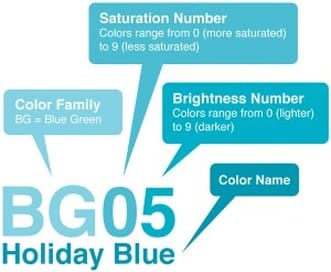
The letters represent the color family of the Copic marker:
- BV = blue-violet
- V = violet
- RV = red-violet
- R = red
- YR = yellow-red
- Y = yellow
- YG = yellow-green
- G = green
- BG = blue-green
- B = blue
- E = earth tones
- C = cool grays
- T = toner grays
- N = neutral grays
- W = warm grays
- F = fluorescent
Then you have the numbers that come after the color family letters, such as BV17. To “get” the Copic number system, you need to think of that as two different numbers and say it that way in your head (or out loud) as “one, seven,” not “seventeen.”
The first number, the 1 in our example of BV17, is the saturation number.
It represents the saturation of the ink—how bright or dull it is. The range is 0 to 9, with 0 being very saturated/bright/no gray mixed in at all and 9 being very de-saturated/dull/lots of gray mixed in.

The second number, the 7 in our example of BV17, is the brightness number.
It represents the value of the color—how light or dark it is. The range is 0 to 9, with 0 being very light and 9 being very dark.

Here are a couple of color swatches in the same color family, so you can see how it works:
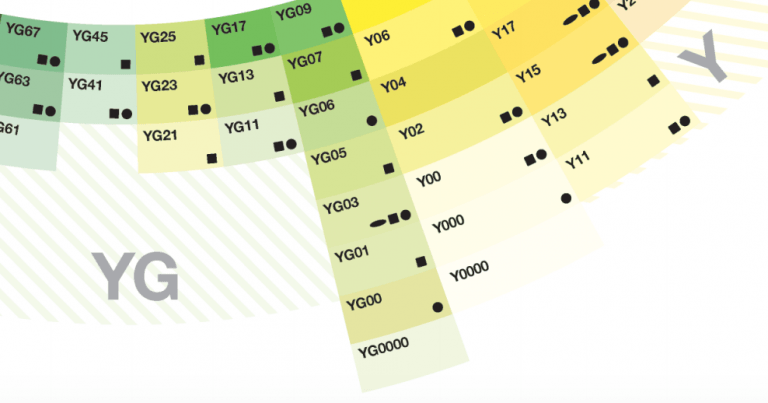
You can download the full Copic Color Chart (pictured below) or the Copic Color Wheel from the Copicmarker.com website resources section.
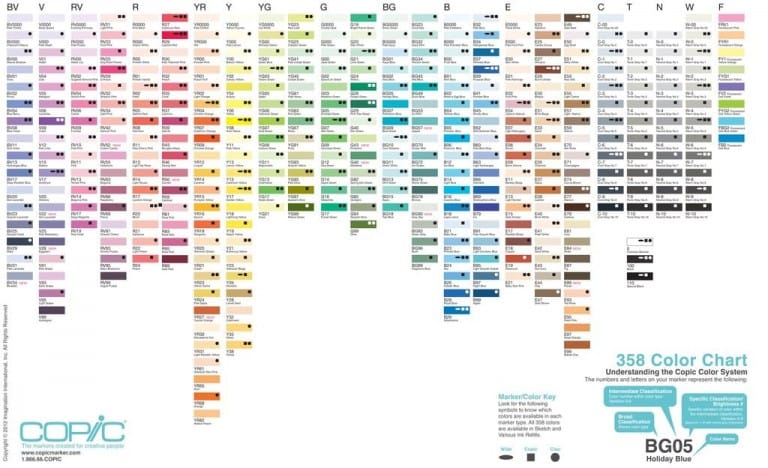
Copic markers are very easy to build and blend
The first thing that caught my eye about Copic markers was the way they are very buildable. With alcohol markers, you know that the more you add hues on top of each other, the muddier the final color outcome will be. And that is what makes Copics superior, in my opinion.
As for blending, all the colors are easily blendable. However, Copic introduced a magic eraser that helps with blending. The Copic Colorless Blender has a number 0 and is included in some sets but not in others. If you get some Copics, get a colorless blender. This is the Magic Eraser of markers. Seriously.
You can use the Copic Colorless Blender to:
- Erase mistakes or clean up edges
- Add highlights
- Add patterns and textures
- Blend from any color to white
- Wet your paper before coloring (to create a smoother color)
If you are coloring and accidentally get outside the line, you can use the Colorless Blender to push and dilute that ink (even if it’s dried two days later).
Copic markers won’t dry out when not in use
Assuming both caps are put on correctly to keep an air-tight seal. They have a guaranteed 3-year shelf life.
Cons of Copic markers
The price is not for everyone
If I were to tell you why Copic markers are a bit pricier than your average alcohol marker, it would be very justifiable and clear. So here are some reasons why, although Copics are pricey, they are worth it.
Copic markers are quality-tested, which means the ink of your Copic marker will always be the same color. Never a different shade… NEVER. Copic markers are also refillable, and the nibs on them can be changed. For example, the Classic marker includes nine nib options: brush nib, standard fine nib, standard broad nib, semi broad nib, soft broad nib, super fine nib, round nib, calligraphy 3 mm nib, and calligraphy 5 mm nib.
Now, all of that, in my opinion, would make the process of the Copic Markers manufacturing as well as the sales and marketing budgets and everything else that takes part in the production of the markers a bit costly. Thus, a pretty justifiable 350 dollars for a classic set of 72.
Conclusion
Let me know if you’d like to get a set of Copic markers and include them in your practice. Or if you still have questions about their worth. Enjoy creating <3

